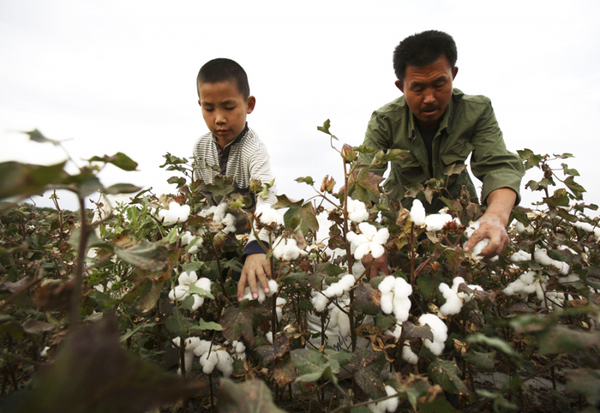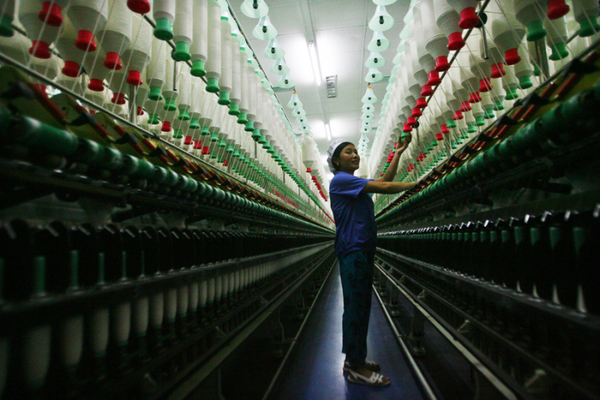
Ten years ago, says O.A. Cleveland, Jr., cotton analysts were of the opinion that Mississippi cotton acres would never drop below 600,000 — that quality land would always favor cotton over other crops.
But that theory has been knocked for a loop in recent years, he says, and this season’s state crop is little more than half that. In fact, cotton acres in the entire Mid-South may struggle to end up at about 800,000.
Stay current on what’s happening in Mid-South agriculture: Subscribe to Delta Farm Press Daily.

O.A. CLEVELAND, JR.
Cleveland, who is Mississippi State University Extension economics professor emeritus with decades of experience in cotton analysis, said at the annual joint meeting of the Mississippi Boll Weevil Management Corporation and the Mississippi Farm Bureau Cotton Policy Committee, “We were thinking Mississippi would have 350,000 acres this year, but with all the weather problems, we’re now looking at probably just 310,000 acres.
Louisiana is about 117,000 acres — not a lot of cotton for them. Arkansas will have maybe 170,000 acres; they’re going to resurvey, because they’re thinking it’s probably less. The real shocker is Tennessee, coming in at about 102,000 — that’s no more than Florida; it’s just stunning to see Tennessee plantings that low.”
USDA’s estimate of 9 million planted acres in the U.S. (8.5 million upland and 150,000 Pima) and a 14.5 million bale crop “surprised a lot of folks,” he says. “Some analysts were forecasting 700,000 to 800,000 acres more. I actually thought it would be about 200,000 acres less than the USDA figure. I think when USDA redoes everything, as they are now in the process of doing, their Aug. 12 announcement will be for fewer acres and fewer bales. I’m thinking we’ll be more like 13 million bales, plus or minus 500,000.”
A losing proposition
As a consequence of the “big downturn” in acreage in recent years, Cleveland says, “We’re still struggling to try and figure out what to do with cotton that is still considerably below the cost of production. You can just about it write down that you’re going to lose 10 cents to 12 cents a pound — and that’s if you’re lucky.

WEATHER PROBLEMS have reduced this year's Mississippi cotton crop to about 310,000 acres.
“The cotton market has been really interesting, to have been basically flat since October. We’ve been trading in about a 10-cent range, and most of the time in a 6-cent range, which is where we are now. It’s unusual to stay in such a narrow trading range for so long.”
Weather is playing a major role in cotton’s fortunes, not just in the U.S. but worldwide, he says.
After Texas’ years-long drought, this spring brought torrential rains and flooding and, he says, “We’re seeing more rain right now on the Texas High Plains. The long range weather analysts have been extremely accurate for a couple of years now, and they’re forecasting a lot more moisture coming into the High Plains throughout this growing season and into harvest. Texas has lost about 400,000 acres in the Coastal Bend region and another 400,000 on the High Plains. They’ll probably come in at about 5 million acres planted, nearly 1 million below what we anticipated. All that loss is weather-related.
“Looking worldwide, we’re seeing weather problems everywhere. India is probably looking at losing 2 million bales due to extremely weak monsoon rains, particularly in the interior. They’re already planting a lot of dry beans in areas that would’ve gone to cotton.”
Weather problems in China

THIS YEAR China has the lowest cotton acreage since Chairman Mao was in power. —Getty Images/China Photos
China has also been beset by weather problems, Cleveland says. “They’re still getting freezing rains, and hail has been rather widespread three of the past four weeks. Their big far west crop has had problems. USDA has estimated that crop at 27 million bales, but industry estimates are much closer to 23.5 to 24 million bales.
“Their eastern crop — which China has basically said it wants to get rid of as part of their national policy decision to convert that region to food and feed grains — is down about 28 percent from last year, and the year prior was down 10 percent. The eastern crop was once their mainstay, their highest-yielding crop. This year, according to my Chinese source, what’s left there is totally rain-soaked, with lots of flooding — a disaster.”
This year, Cleveland says, “China has the smallest cotton acreage since Chairman Mao was in power.”
USDA is forecasting world cotton production of 111 million bales, 8 million less than last year, he says, “and that could come down even more.” But, overhanging the world market, he says, is 60 million bales in China, representing some 60 percent of the world’s carryover.
Check Current Cotton Futures Prices
“It’s very old cotton, and they announced just last week that they’re going to sell cotton. They’ve been announcing it month after month for a year, and then all of a sudden they say they’re going to sell 4.5 million bales — about one-third is 2011 crop, a bit over one-third is 2012 crop, and some is 2012 crop U.S. imported. They’re not putting this cotton out for export; it will be available only to their textile mills.
A nervous market

CHINESE MILLS have very modern equipment that needs quality machine-picked cotton for fine count yarns," says O.A. Cleveland, Jr. — Getty Images/China Photos
“The mills will take all the U.S. cotton, because it’s a much higher grade than the Chinese cotton. The low grade, three- or four-year old cotton will go to coarse count yarn mills. There’s not much market for coarse count cotton yarns; even most blue jeans now are made of fine count cotton. As a consequence, this Chinese cotton isn’t going to compete on the world market — most will go to Chinese mills.”
The world needs to be rid of the Chinese cotton, Cleveland says. “It isn’t dragging the market down, but it does make the market nervous.”
Important upcoming events: Delta Farm Press Calendar of Events
There are just three places the Chinese will get their raw cotton, he says: Australia, Brazil, or the U.S. “These are the only places in the world they can get high quality machine-picked cotton. That’s important now, because Chinese mills, and all new mills in the world, have very modern equipment that needs quality machine-picked cotton for fine count yarns.”
And that means, Cleveland says, that buyers are now willing to pay a premium for the quality cotton these mills need. “Five years ago, merchants wouldn’t pay a premium for quality, but now, finally, we’re seeing that quality carries a price tag, particularly for the textile mills — they scramble for this high quality cotton.”
The cotton market seems to have “built in a low price of around 65 cents,” he says, “and I think we’ll continue to find support at that level, with bumps up to 70 cents. I think sooner or later — it may be December, it may be March — we’ll see 70 cents, maybe 72 cents.
“China, India, the U.S., Brazil, Australia, have all had significant weather problems, and all of a sudden we could be looking at the mid-70s, the high 70s. We could sell some July 2016 in the high 70s.” But, he cautions laughingly, “Don’t hold your crop back waiting on my prediction to materialize. I’m pretty sure you’ll be able to book some of this crop at 70 cents, and anytime it gets back to 67 cents, you may want to start doing some pricing.
Upswing in grower pricing

IN THE LAST 10 days, we’ve seen a considerable amount of fund money moving into the cotton market," says O.A. Cleveland, Jr.—Getty Images/Scott Olson
“In the last few days, we’ve seen a tremendous amount of grower pricing, mostly through call pools or marketing pools, which has brought the market down. But in last 10 days, we’ve seen a considerable amount of fund money moving into markets, all on the long side, which has given good support. I think the funds are beginning to realize all the problems we’re seeing around the world.”
Growers should be aware, Cleveland says, that events such as the Greek fiscal crisis can have an impact on the cotton market by devaluing the country’s currency and making the dollar more expensive. “In the last few days, the value of the U.S. dollar has shot sky high, and that costs us exports.”
USDA has exports pegged at 10.7 million bales, he says, “but we have already exported more than that. We’re all stunned as to why they’ve not increased their export figure. I’m very supportive of USDA numbers, but they’ve missed this one.
They have carryover stocks at 4.4 million bales, but by Aug. 1 I think they will drop that to about 3.7 million or 3.8 million bales. When we put a 3 in front of carryover number, all of a sudden things tend to get a little bullish. Funds like to see carryover at about 3.4 to 3.5 million. Looking at the crop differential this year versus demand for the coming season, a year from now we could see carryover at 2.5 million to 2.9 million bales. And if we put a 2 in front of carryover numbers, things could get more bullish.
“I still feel very positive about cotton,” Cleveland says. “But, we still need to get the market higher to encourage more acreage. I do think we will have higher acreage next year.”
About the Author(s)
You May Also Like




